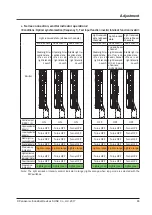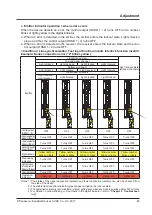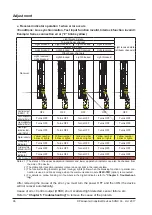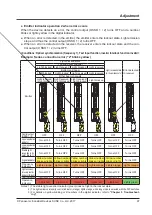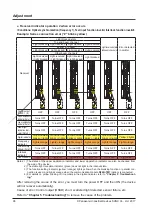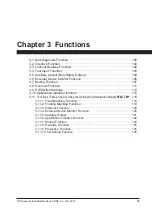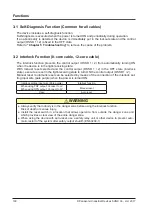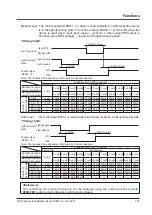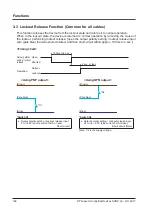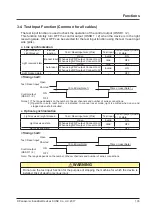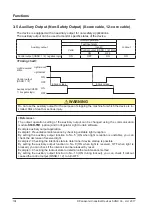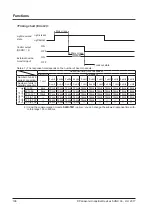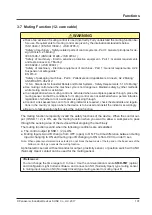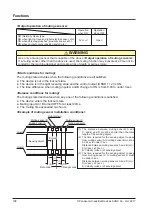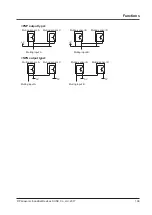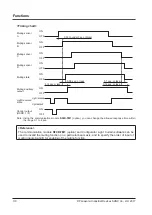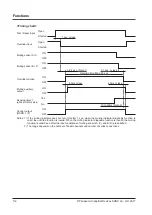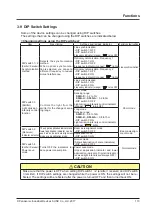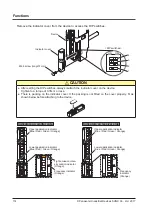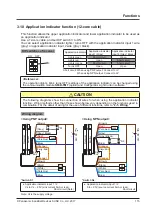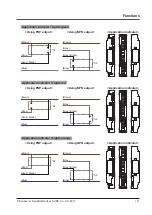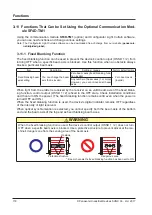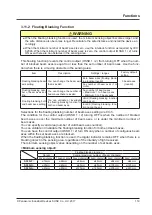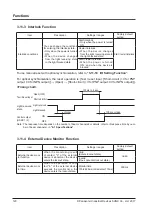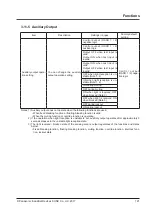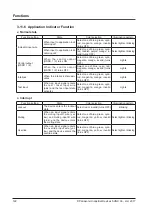
Functions
© Panasonic Industrial Devices SUNX Co., Ltd. 2017
107
3-7 Muting Function (12-core cable)
WARNING
●
Risk of an accident if muting control is used incorrectly. Fully understand the muting function be-
fore use. Requirements for muting control are given by the international standards below.
ISO 13849-1 (EN ISO 13849-1, JIS B 9705-1):
“Safety of machinery - Safety-related parts of control systems - Part 1: General principles for de
-
sign, Article 5.2.5 Muting”
IEC 61496-1 (ANSI/UL 61496, JIS B 9704-1):
“Safety of machinery - Electro sensitive protective equipment - Part 1: General requirements
and tests, Annex A, A.7 Muting”
IEC 60204-1 (JIS B 9960-1):
“Safety of machinery - Electrical equipment of machines - Part 1: General requirements, 9.2.4
Suspension of safeguards”
EN 415-4:
“Safety of packaging machines - Part 4: Palletizers and depalletizers, Annex A, A2.2 Muting”
ANSI/RIA R15.06-2012:
“U.S. A. Standards for Industrial Robots and Robot Systems - Safety Requirements, 5.10.10 Muting”
●
Use muting control when the machine cycle is not dangerous. Maintain safety by other methods
while muting control is activated.
●
In an application where muting control is activated when a workpiece passes through, place the
muting sensor so that the conditions for muting control are not satisfied when a person intrudes,
regardless of whether or not a workpiece is passing through.
●
Conduct a risk assessment, and if a muting indicator is required, check the standards and regula-
tions in the country or region where the device is to be used and install the indicator accordingly.
●
Be sure to test operation before using the muting function.
The muting function temporarily invalid the safety functions of the device. When the control out-
put (OSSD 1 / 2) is ON, use the muting function when you want to allow a workpiece to pass
through the sensing area of the device without stopping the machinery.
The muting function is valid when the following conditions are all satisfied.
● The control output (OSSD 1 / 2) is ON.
● Muting inputs A and B change from OFF (open) to ON. The time difference between muting
input A changing to ON and muting input B changing to ON is from 0.03 to under 3 sec.
Note: When optical synchronization is selected, do not block the beam axis of the top end or the beam axis of the
bottom end. Doing so cancels the muting function.
A photoelectric sensor with semiconductor output, proximity sensor, or position switch with a NO
(Normally Open) contact can be used for the muting sensor.
<Reference>
You can change the time range to 0 to 3 sec. Use the communication module
SF4D-TM1
(option)
and Configurator Light Curtain software, and connect an NO (Normally Open) type muting sensor
to muting input A and an NC (Normally Closed) type muting sensor to muting input B.
Summary of Contents for SF4D-x-01 Series
Page 2: ... Panasonic Industrial Devices SUNX Co Ltd 2017 2 MEMO ...
Page 126: ...Functions Panasonic Industrial Devices SUNX Co Ltd 2017 126 MEMO ...
Page 130: ...Maintenance Panasonic Industrial Devices SUNX Co Ltd 2017 130 MEMO ...
Page 140: ...Troubleshooting Panasonic Industrial Devices SUNX Co Ltd 2017 140 MEMO ...
Page 174: ... Panasonic Industrial Devices SUNX Co Ltd 2017 174 MEMO ...

